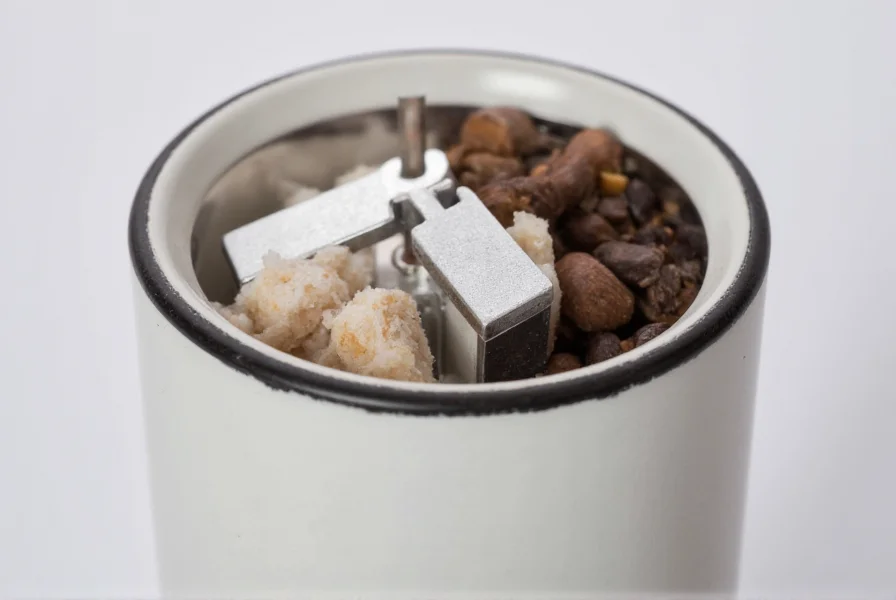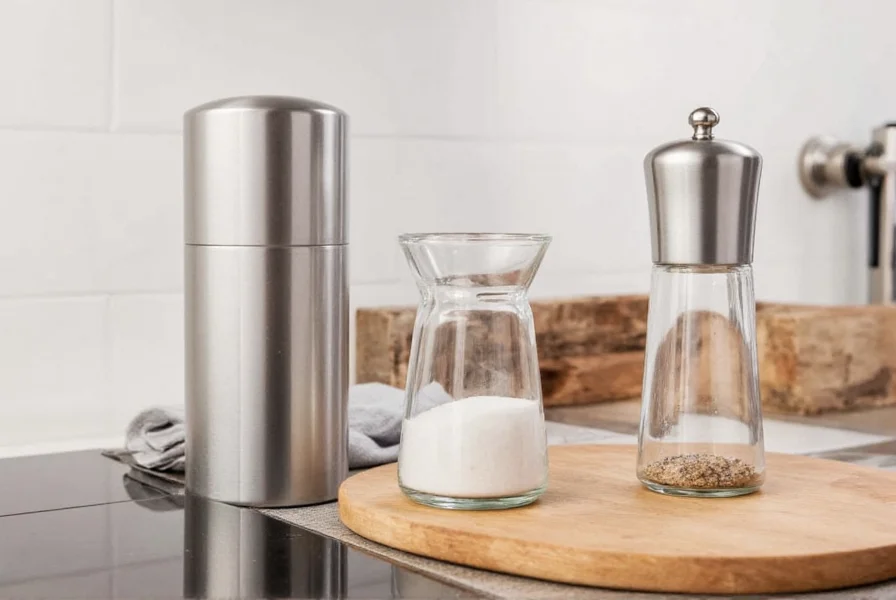Automatic salt and pepper grinders are electrically powered kitchen tools that grind spices with the press of a button, eliminating manual effort while providing consistent grind sizes. These devices typically use battery-powered or rechargeable mechanisms with adjustable settings for fine to coarse grinding, making them ideal for home cooks seeking convenience and precision in seasoning.
For home chefs tired of struggling with traditional manual mills, automatic salt and pepper grinders offer a modern solution that transforms the seasoning process. These innovative kitchen tools have gained popularity for their ability to deliver consistent results with minimal effort, addressing common frustrations like uneven grinding and physical strain during extended cooking sessions.
How Automatic Grinding Mechanisms Work
Unlike their manual counterparts requiring twisting or cranking, automatic salt and pepper grinders employ small electric motors powered by batteries or USB charging. When activated, these motors rotate ceramic or stainless steel grinding mechanisms that crush whole peppercorns or salt crystals to your desired consistency. The most advanced models feature programmable grind size settings controlled through intuitive interfaces, allowing precise customization from fine powder to coarse chunks.

Key Benefits Over Manual Options
Automatic grinders solve several pain points associated with traditional mills. They eliminate the physical effort required for manual grinding, which particularly benefits users with arthritis or limited hand strength. The consistent grind quality ensures even seasoning distribution, while the one-touch operation allows for precise control during cooking—no more over-seasoning from accidental over-twisting.
| Feature | Automatic Grinders | Manual Grinders |
|---|---|---|
| Effort Required | Minimal (button press) | Significant (twisting/cranking) |
| Grind Consistency | Highly consistent | Variable based on user effort |
| Accessibility | Ideal for limited mobility | Challenging for some users |
| Seasoning Control | Precise with adjustable settings | Dependent on user technique |
Essential Features to Consider
When evaluating electric salt and pepper mills, focus on these critical elements that impact performance and longevity. The grinding mechanism material—typically ceramic or hardened steel—determines durability and resistance to corrosion, especially important for salt which can degrade metal components over time. Battery life and power source options (replaceable batteries versus rechargeable models) affect convenience and long-term value.
Programmable grind size settings represent a significant advantage in automatic seasoning dispensers, allowing customization for different culinary applications—from fine table salt to coarse cracked pepper for steak. Look for models with easy-to-adjust settings that maintain their calibration through regular use. The fill capacity and ease of refilling also impact practicality, with larger reservoirs reducing refill frequency during extended cooking sessions.
Maintenance Requirements for Longevity
Proper care ensures your automatic spice grinding mechanism remains effective. Unlike manual mills that rarely require maintenance, electric models need periodic attention to their moving parts. Regularly wipe exterior surfaces with a damp cloth, avoiding direct water contact with electrical components. For the grinding mechanism, follow manufacturer instructions—some ceramic mechanisms can be rinsed while others require dry cleaning only.
Battery-operated pepper grinders benefit from removing batteries during extended storage periods to prevent potential leakage damage. Check grinding mechanisms periodically for buildup that could affect performance, especially when using moist salts or freshly ground spices. Most quality models feature removable grinding chambers that simplify cleaning and maintenance of automatic grinders.
Practical Usage Tips for Home Kitchens
Maximize your investment in smart salt and pepper grinders by understanding their optimal applications. These devices excel during meal preparation when consistent seasoning matters most, but consider keeping a manual backup for outdoor cooking where battery performance might be affected by temperature extremes. When refilling, use high-quality whole peppercorns and dry salts to prevent clogging and ensure optimal grinding performance.
Position automatic seasoning dispensers within easy reach of your primary cooking area but away from direct heat sources that could affect battery life. For households with multiple cooks, standardized grind settings eliminate variability in seasoning intensity. Remember that while these tools offer convenience, they work best as part of a comprehensive seasoning strategy that includes tasting and adjusting throughout the cooking process.
Common Misconceptions Clarified
Many home cooks assume automatic salt and pepper grinders compromise flavor quality compared to manual grinding, but this isn't necessarily true. The key factor is the grinding mechanism's quality and material, not whether it's powered manually or electrically. High-end automatic models often feature superior grinding mechanisms that preserve essential oils better than cheaper manual alternatives.
Another misconception suggests these devices are overly complex to operate, yet most feature intuitive one-button operation simpler than adjusting many manual mills. While initial costs may be higher than basic manual options, the long-term value of consistent performance and accessibility makes them worthwhile investments for frequent cooks.
Final Considerations
Automatic salt and pepper grinders represent a thoughtful upgrade for home kitchens seeking efficiency without sacrificing quality. By understanding their mechanisms, benefits, and proper maintenance, you can select and utilize these tools to enhance your cooking experience. The best models balance convenience with performance, offering reliable operation and consistent results that support better seasoning practices in everyday cooking.
How long do batteries typically last in automatic salt and pepper grinders?
Most quality battery operated pepper grinders use AA or AAA batteries that last 6-12 months with regular home use. Rechargeable models typically require charging every 2-3 months depending on usage frequency. Battery life varies based on grind duration per use and the power requirements of the specific grinding mechanism.
Can I use sea salt in automatic salt grinders without damaging them?
Yes, but with important considerations. Use only dry sea salt crystals in grinders specifically designed for salt, as moisture can corrode mechanisms. Avoid moist or wet sea salts, and choose models with ceramic grinding mechanisms which resist corrosion better than metal components. Regular cleaning prevents salt buildup that could affect performance.
Do automatic grinders produce more consistent results than manual mills?
Generally yes, when comparing quality automatic models to basic manual mills. The consistent motor speed in automatic seasoning dispensers creates uniform particle size, while manual grinding consistency depends on user technique and strength. However, high-end manual mills with precision mechanisms can also produce excellent consistency—it's the quality of the grinding mechanism that matters most, not the power source.
What's the difference between ceramic and stainless steel grinding mechanisms?
Ceramic mechanisms resist corrosion better, making them ideal for salt grinding, and maintain sharpness longer but can be brittle. Stainless steel offers greater durability against impact and handles pepper well, but may corrode over time with salt use. Ceramic generally provides smoother grinding action, while steel mechanisms can be more robust for heavy use. The best automatic spice mills often use ceramic for salt and steel for pepper in dual-grinder models.











 浙公网安备
33010002000092号
浙公网安备
33010002000092号 浙B2-20120091-4
浙B2-20120091-4